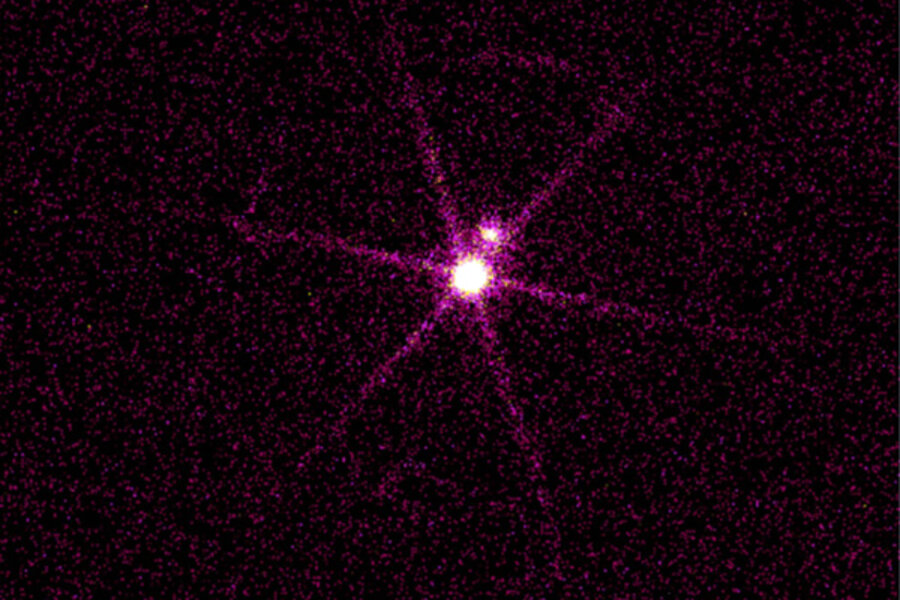True age of dying stars revealed by new model
Loading...
Aging white dwarf stars may be coy about revealing their true age to astronomers, but a new computer simulation has finally unmasked the deception that allows such dwarfs to appear younger by shining more brightly.
White dwarfs are the remnants of stars that have used up nearly the last of their hydrogen and helium fuel. Astronomers can determine the age of white dwarfs based on their fading brightness and use that to estimate the age of surrounding star clusters.
"White dwarf stars radiate away their stored thermal energy, and so they fade and cool," said Enrique Garcia-Berro, an astrophysicist at the Universitat Politècnica de Catalunya in Spain who led the new study.
But the white dwarf dating method gave a younger age estimate compared to another dating method, which measures the age of the oldest main-sequence stars still capable of nuclear fusion within their fiery furnaces. (The main sequence of stars is a plot that shows the relationship between star color and brightness and shows how many stars change as they progress in age.)
How old a white dwarf?
Such an age discrepancy stood out especially for the well-studied star cluster NGC-6791.
The main sequence method pegged its age of birth to about 8 billion years ago, while the white dwarf method yielded a much younger age of just 6 billion years. The universe is about 13.7 billion years old.
Now the latest model developed by Garcia-Berro and his colleagues has shown that the illusion of white dwarf youth depends on the release of gravitational potential energy, which creates heat and prolongs the cooling phase. Such potential energy is freed when elements settle out within the white dwarf or end up physically separated.
An element known as neon-22 sinks slowly into the white dwarf interior as "one of the ashes" left over from the star's helium-burning phase, the researchers said. More cooling of the core allows the solid elements carbon-12 and oxygen-16 to separate.
"Once you have neon-22 sedimentation and carbon-oxygen phase separation, both processes release potential gravitational energy," Garcia-Berro told SPACE.com. "That slows down cooling and makes the white dwarf brighter."
The new study is detailed in the May 13 issue of the journal Nature.
White dwarf deception
So by appearing brighter, the white dwarf stars look younger than their years.
This effect appears much more important for metal-rich star clusters such as NGC-6791. The new model more accurately pinpointed the age of the white dwarfs as around 8 billion years, give or take 200 million years or so — a much better fit than the estimate given by the main-sequence method.
Still, the model's correction might change the age of other star clusters by 5 to 10 percent, Garcia-Berro explained.
Garcia-Berro's findings have proven a sweet validation of his doctoral thesis published back in 1987 as a paper in the journal Nature. But he had to wait until science observations and modeling technology caught up and allowed him to test his explanation for the suspiciously youthful white dwarfs.
The success also makes white dwarf age estimates more reliable tools for astronomers to understand the timeframe in which different star clusters evolved. The dead stars eventually fade, but at least they can shed a bit more truthful light during their final stroll down Sunset Boulevard.
"The important thing is that we now have a reliable and very simple chronometer which allows us to measure cosmic timescales," Garcia-Berro said.





